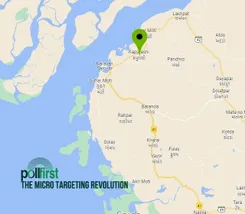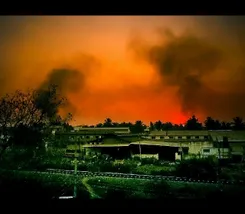Re-defining Politics Through Digital Micro-Targeting.
What happens when you bring together data from surveys, a decade of micro voting trends, understanding of human cognition processes and a technology that can help target content to a radius of 1 km anywhere in the country to a demography that you can micro target?.
You get Pollfirst’s micro targeting engine that alters the political game. It is simply the smartest political communication tool in the digital era.
The human cognition process is designed to remain in its comfort zone- keep believing in what they already believe in. Bypassing cognitive resistance is both a science and an art but you cant do that unless you find a way to reach them- at scale and accuracy. There is more- you can now allocate more resources into areas which have been have been weak or strong, depending on your political strategy.
We have the highest respect for your privacy. The data is sourced from publicly shared data and on ground surveys that help us understand which way the wind is blowing. This data is then put on top of our micro-targeting engine adfirst.in which helps you reach audiences into narrow clusters as small as 1 km in radius.
Imagine a scenario where you decide to run a campaign where you want to reach young women in the age group of 18-23 in a particular state in booths/localities where Party A had secured more than 65% votes. The target of the campaign is to ensure that this population segment begins to consider Party B as an option.
The challenge here are multiple- first, do we have enough data to tell where these localities are? If we have this data, is there a way our content can reach these localities and miss other areas around them? How do we ensure that the ‘impressions’ are evenly spread across all these localities and not concentrated in one or more locations? How can we target the correct demography and above all, what is the kind of content that we would need to strike the right emotional triggers?
At Pollfirst, we spent many years thinking about this and coming up with ways to solve the problem.
First: Mapping the booths: At Pollfirst we have spent many years in building up a database of booth level election results- understanding how each locality has ‘behaved’ over the last few elections. This data divides a the ‘target market’ into two broad categories- localities that have remained stubbornly with one party, localities that keep swinging every election. We also measure the intensity of support to understand the magnitude of swings in each segment.
Second: Data from the surveys: Our on-ground surveys would tell us the overall voting behaviour and perception among women in the 18-23 age group and, also understand what issues they are responding to? Are they voting more on the basis of the candidate or the party, what issues they are facing in their daily life. In addition to the survey data, we would also get a lot of behavioural clues from focus groups and unstructured interviews, helping us understand what are the issues that could tilt the scales.
Third: Location mapping: While ‘national’ issues presently have ‘primacy’ in helping people decide which party to vote for, we could change the game by bringing the discussion back to local issues- data provided by our Locality Mapping exercise will help you identify local issues which could open up a new direction to content. The hyper-localisation of content could be a crucial tipping point and make campaigns more relatable.
Fourth: The content: Content is king but the king needs a chariot. Content creators would now have to focus on behavioural triggers. The strategic focus is on either re-enforcing the belief systems or introduce elements that would talk to other set of belief systems, depending on which side you are on. For content to be effective, the focus has to be on tapping into the right emotional trigger- focused on how you want them to feel, rather than what you want to know.
As stated earlier, content is an art and a science but most campaigns continue to focus their content on ‘information’ and not spreading the ‘feel.’ Highlighting manifesto points that would ‘benefit’ the voters would not be as effective as highlighting the emotional value. People are voting more on the basis of their ‘vision of the world’ rather than what they stand to gain from the ‘electoral transaction.
Lets see how this works on the ground.
Kapurashi is a small village in the Abdasa Vidhan Sabha of the Kutch district of Gujarat (Location here). The village has two booths (number 1 & 2). The BJP has taken a lead in this village for the last four elections, and it led by 539 votes in the 2019 Lok Sabha election (1001 votes were polled in the two booths) as the BJP polled 75% of the votes in this locality. BJP polled more than 65% votes in 104 of the 288 localities in Abdasa and formed the bulk of the lead on the seat.
It is imperative for the BJP to hold Kapurashi with a big margin. Data indicates that the Congress would win the seat if BJP could be kept close to 500 votes, instead of the 753 votes it polled in the 2019 Lok Sabha election. If you are the BJP, you are looking to consolidate your support base and if you are the Congress, you are obviously trying to break through and reduce the lead. Whatever your strategy, you need a tool that would help you direct higher share of resources to localities that are at the core of your strategic focus.
Micro-targeting, outside the digital context, has the potential to completely alter the game. You can have a probability score for each voter by using a combination of voter’s demographic data and broader survey trends. But let us save that for another day.
For business enquiries, please reach out to Sunil Semwal +91 99537 79457 or Abdul Sami +91 73027 27079

.png)

